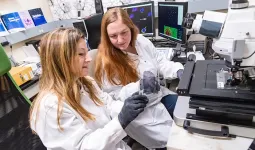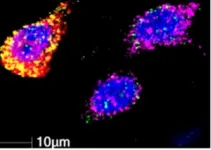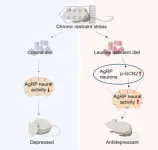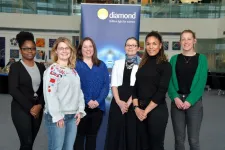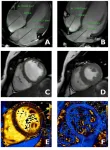(Press-News.org) A new study led by UC Davis MIND Institute researchers confirms that brain development in people with autism differs from those with typical neurodevelopment. According to the study published in PNAS, these differences are linked to genes involved in inflammation, immunity response and neural transmissions. They begin in childhood and evolve across the lifespan.
About one in 44 children in the U.S. has autism. Autistic individuals may behave, communicate and learn in ways that are different from neurotypical people. As they age, they often have challenges with social communication and interaction.
The researchers aimed to understand how neurons in the brain communicate and the interaction between age and autism. They studied the genetic differences in brain neurons in people with autism at different ages and compared them to those with neurotypical development.
Earlier studies have shown that certain brain regions mark early excess, followed by reductions in volume, connectivity, and cell densities of neurons as people with autism age through adulthood.
“Initial excess and overconnectivity of neurons may make the brain more vulnerable to early aging and inflammation, which may lead to further changes in the brain structure and function,” said co-senior author Cynthia Schumann. Schumann is a professor of neuroscience in the Department of Psychiatry and Behavioral Sciences. She is affiliated with the UC Davis MIND Institute. “Understanding how the brain in a person with autism changes throughout life will provide opportunities for early intervention.”
Method
The researchers analyzed brain tissues from 27 deceased individuals with autism and 32 without autism. The age of these individuals ranged between 2 and 73 years.
The tissues were taken from the superior temporal gyrus (STG) region — an area in the brain responsible for sound and language processing and social perception.
“The STG plays a critical role in integrating information. It helps provide meaning about our surroundings. Despite its importance, it remains relatively unexplored,” Schumann commented. “We wanted to understand how the molecular changes in this critical part of the brain are happening in autism.”
The team analyzed brain tissues as well as isolated neurons using laser capture microdissection techniques. They studied mRNA expression on a molecular level in the STG tissue and the isolated neurons. The mRNA translates the DNA code into instructions the cell machinery can recognize and use to make proteins for different body functions.
Main findings
The study identified 194 significantly different genes in the brains of people with autism. Of those genes, 143 produced more mRNA (upregulated) and 51 produced less (downregulated) in autistic brains than in typical ones.
The downregulated genes were mainly linked to brain connectivity. This may indicate that the neurons may not communicate as efficiently. Too much activity in the neurons may cause the brain to age faster in autistic individuals.
The study also found more mRNA for heat-shock proteins in autistic brains. These proteins respond to stress and activate immune response and inflammation.
Age-related brain differences between neurotypical and autistic people
The study identified 14 genes in bulk STG tissue that showed age-dependent differences between autistic and neurotypical individuals and three genes in isolated neurons. These genes were connected to synaptic as well as immunity and inflammation pathways.
For example, in typical brains, the expression of the HTRA2 gene is much higher before age 30 and decreases with age. In the STG neurons of people with autism, the expression levels of this gene begin lower and increase with age.
“Changes in HTRA2 have been implicated in neuronal cell loss and cell functions - such as proper protein folding, and reusing and recycling cell components,” explained co-senior author Boryana Stamova, associate professor in the Department of Neurology. She is also affiliated with the MIND Institute. “HTRA2’s role is vital for normal brain function.”
The researchers also uncovered different inflammation patterns in autistic brain tissues. Several immune and inflammation-related genes were strongly upregulated, indicating immune dysfunction that may get worse with age.
The study pointed to an age-related decrease in the gene expression involved in Gamma-aminobutyric acid (GABA) synthesis. GABA is a chemical messenger that helps slow down the brain. It works as an inhibitory neurotransmitter.
“GABA is known for producing a dampening effect in controlling neuronal hyperactivity in anxiety and stress. Our study showed age-dependent alterations in genes involved in GABA signaling in brains of people with autism,” Stamova said.
The study found direct molecular-level evidence that insulin signaling was altered in the neurons of people with autism. It also noted significant similarities of mRNA expressions in the STG region between people with autism and those with Alzheimer’s disease. These expressions may be linked to increased likelihood of neurodegenerative and cognitive decline.
“The findings from our study are really important in understanding what is happening in the brains of people with autism. Identifying these changes over time gives us an opportunity to think about some interventions that might be more useful in certain periods,” Schumann said.
Credits
The study’s co-authors are Bradley Ander of the UC Davis MIND Institute and the Department of Neurology; Alicja Omanska of the UC Davis MIND Institute and the Department of Psychiatry and Behavioral Sciences; and Michael Gandal and Pan Zhang of UCLA.
The researchers are grateful to the families of the brain donors for their invaluable gift to autism research. Brain tissues were provided by the University of Maryland Brain and Tissue Bank, Autism Tissue Program (now Autism BrainNet), Brain Endowment for Autism Research Sciences (BEARS) at the UC Davis MIND Institute, and the Harvard Brain Tissue Resource Center.
This work is supported by National Institutes of Health (NIH) grants MH108909 and the Intellectual and Developmental Disabilities Research Center at UC Davis (1U54HD079125). The study also benefited from NIH instrumentation funding (S10RR-023555, S10OD-018174) for the laser capture microdissection and RNA sequencing.
END
UC Davis study uncovers age-related brain differences in autistic individuals
Genes involved in inflammation, immune response and neural connectivity behave differently in brains of people with autism
2023-03-03
ELSE PRESS RELEASES FROM THIS DATE:
An interdisciplinary solution for enhanced high-resolution imaging in electron and optical microscopy
2023-03-03
Although electron microscopy can already reveal details as small as one nanometer, ongoing research seeks to break through barriers limiting image quality and reducing the optical dose on the samples. Aberration is a common problem in electron microscopy that can reduce the resolution and quality of the images produced. Additional complex phase and amplitude controls are needed in these microscopes. An international team of researchers led by Akhil Kallepalli (Kallepalli Lab) working within the Optics Group at the University of Glasgow set out to address the problem. Working from an optics perspective, they developed and tested a new ghost ...
Tree rings and strontium point researchers to the provenance of 400-year-old timber
2023-03-03
Tree-ring analysis – so-called dendrochronological analysis – has been part of archaeology for many years and has made it possible for archaeologists to date old wooden objects with great precision. And in many cases, they have also been able to determine the provenance of the wood.
But it has proven difficult for researchers to determine timber’s place of origin when the historic timber was imported into Denmark from further afield to serve as building material.
In a new study in the journal PLOS ONE, Associate Professor Aoife Daly and Dr Alicia Van Ham-Meert from the University of Copenhagen show that combining analyses of ...
Chinese scientists discovered roles of hypothalamic amino acid sensing in antidepressant effects
2023-03-03
Depression is a leading cause of disability around the world and contributes greatly to the global burden of disease. Nutrition is essential for the maintenance of normal emotional states. Nutritional therapy is rising up in many disease treatments, but little is known in the depression field. Unbalanced nutrition is implicated in the etiology of depression, potentially hindering treatment. For example, many essential amino acids (EAAs) in serum are changed in patients with depression, such as tryptophan, threonine, leucine, isoleucine, and valine. However, whether EAA contributes to depression ...
Health policy experts call for confronting anti-vaccine activism with life-saving counter narratives
2023-03-03
Public and private sector health officials and public policymakers should team up immediately with community leaders to more effectively disseminate accurate narratives regarding the life-saving benefits of vaccines to counter widespread, harmful misinformation from anti-vaccine activists.
Such is the message of a UC Riverside-led viewpoint piece published Thursday, March 2, in the leading international medical journal, The Lancet.
“We need to consistently amplify the best science and find the best ways of communicating so that people are hearing it through multiple channels instead of through one or two sources,” ...
Inspirational women from UK Synchrotron launch major recruitment campaign to promote STEM careers at AAAS international science conference
2023-03-03
Today, at the prestigious AAAS science conference in Washington DC, Diamond Light Source, the UK’s synchrotron science facility, will unveil plans for its biggest recruitment campaign since its inception 20 years ago. Dozens of new roles will be available in the coming year and some examples of the variety of STEM careers will be showcased and celebrated by an all-women line up from the Diamond team. This recruitment drive aims to ensure the facility has the knowledge and expertise required to help plan and deliver world leading science for the next decade and beyond
In the lead up to ...
Imaging the adolescent heart
2023-03-03
Magnetic resonance imaging (MRI) has allowed scientists at the Centro Nacional de Investigaciones Cardiovasculares (CNIC) to produce an accurate picture of the healthy heart in adolescence. Using this advanced technology, the research team was able to determine reference values for anatomical and functional parameters in the heart during adolescence. This information, pubished in eClinicalMedicine, has direct implications for clinical practice.
“Magnetic resonance imaging has become a very important method for studying the heart because it avoids exposing patients to radiation ...
Archaeological study of 24 ancient Mexican cities reveals that collective forms of governance, infrastructural investments, and collaboration all help societies last longer
2023-03-03
Some cities only last a century or two, while others last for a thousand years or more. Often, there aren’t clear records left behind to explain why. Instead, archaeologists piece together clues from the cities’ remains to search for patterns that help account for why certain places retained their importance longer than others. In a new study published in the journal Frontiers in Ecology and Evolution, researchers examined 24 ancient cities in what’s now Mexico and found that the cities that lasted the longest showed indications of collective forms of governance, infrastructural investments, and cooperation between households.
“For years, my colleagues and I have ...
50 leading national organizations unite to curb infodemic of health and science misinformation and disinformation
2023-03-03
The Coalition for Trust in Health & Science today announced its formation and public launch during the 2023 American Association for the Advancement of Science (AAAS) Annual Meeting in Washington, D.C. The alliance was formed to unite leading organizations from across the entire health ecosystem to advance trust and factual science-based decision-making. The partnership aims to achieve a measurable increase in the public’s willingness – and ability – to access evidence-based information necessary to make the best personally appropriate health decisions for themselves, their ...
DART impact provided real-time data on evolution of asteroid's debris
2023-03-03
When asteroids suffer natural impacts in space, debris flies off from the point of impact. The tail of particles that form can help determine the physical characteristics of the asteroid. NASA’s Double Asteroid Redirection Test mission in September 2022 gave a team of scientists including Rahil Makadia, a Ph.D. student in the Department of Aerospace Engineering at the University of Illinois Urbana-Champaign, a unique opportunity—to observe the evolution of an asteroid’s ejecta as it happened for the first time.
“My work on this mission ...
Artifical intelligence approach may help detect Alzheimer's disease from routine brain imaging tests
2023-03-03
BOSTON – Although investigators have made strides in detecting signs of Alzheimer’s disease using high-quality brain imaging tests collected as part of research studies, a team at Massachusetts General Hospital (MGH) recently developed an accurate method for detection that relies on routinely collected clinical brain images. The advance could lead to more accurate diagnoses.
For the study, which is published in PLOS ONE, Matthew Leming, PhD, a research fellow at MGH’s Center for Systems Biology and an investigator at the Massachusetts Alzheimer’s Disease Research Center, and his colleagues used deep learning—a type of machine learning ...
LAST 30 PRESS RELEASES:
New fossil study illuminates on the evolutionary success of frogs
Patient-specific human liver model to understand disease mechanisms
Confused by the doctor's questionnaire? U of A study suggests it's common
How do brains stay stable, and when might a dose of flexibility be helpful?
mRNA revitalizes aging immune systems—the liver as a fountain of youth
Rural-urban differences in the prevalence of chronic pain among adult cancer survivors
Food insecurity, burnout, and social isolation among resident and fellow physicians
How do spinal cord injuries heal?
Detailed cell map unlocks secrets of how reproductive organs form
Large language models unleash AI’s potential for autonomous and explainable materials discovery
Gut bacteria have evolved rapidly to digest starches in ultra-processed foods
New risk score helps predict pancreatic cancer recurrence
New evidence challenges understanding of Parkinson’s disease
A new study reveals how embryos and the uterus “talk” during implantation
Cedars-Sinai reports heart attacks, general illness spiked after LA fires
PolyU develops ultra-stable, mucus-inspired hydrogel to boost gastrointestinal wound healing
Flour choice shapes sourdough microbial communities
Can a retinal implant reverse macular degeneration?
Feeding fungi plant remnants produces tasty protein to fortify vegan, vegetarian diets
New tech reduces false positives from breast ultrasounds
Drone-mounted lab monitors fertilizer runoff in real time
Short, light-intensity exercise boosts executive function and elevates mood in children
Jeonbuk National University researchers reveal new interface engineering strategy for efficient and stable back-contact solar cells
Tyrosinase drives hydroquinone-induced exogenous ochronosis: not HGD inhibition
UMass Amherst chemists develop unique tool for studying RNA
Disappointment alters brain chemistry and behavior
A built-in odometer: new study reveals how the brain measures distance
Stress-related brain signals drive risk of cardiovascular disease in people with depression and anxiety
New details on role of fat transport molecules in Alzheimer’s onset
Study illuminates how an antiviral defense mechanism may lead to Alzheimer’s disease
[Press-News.org] UC Davis study uncovers age-related brain differences in autistic individualsGenes involved in inflammation, immune response and neural connectivity behave differently in brains of people with autism
